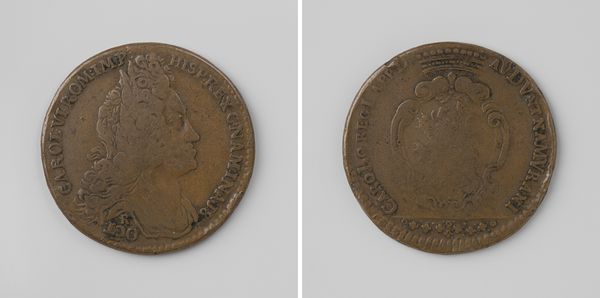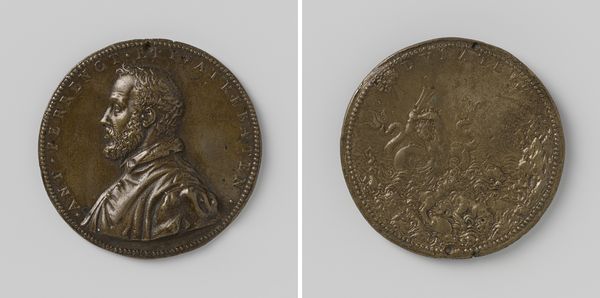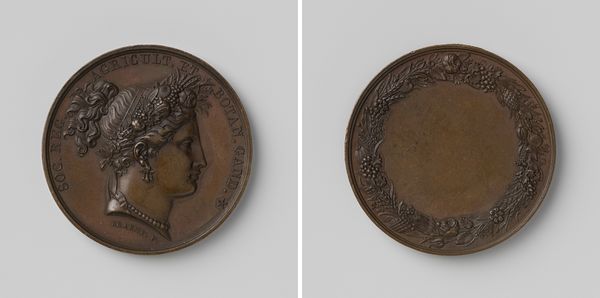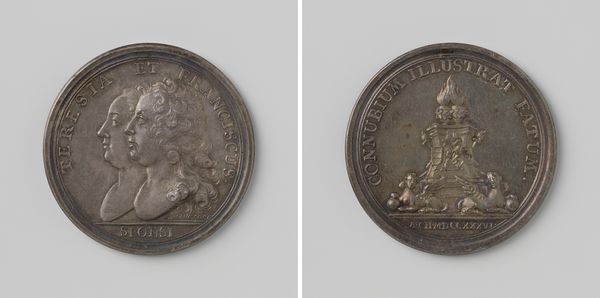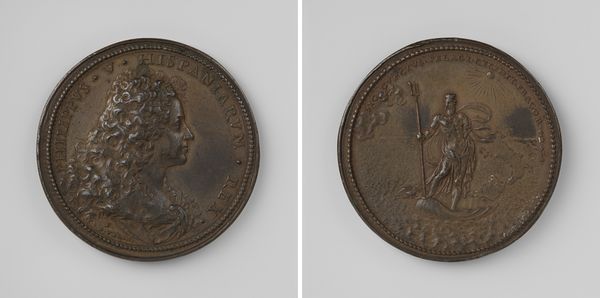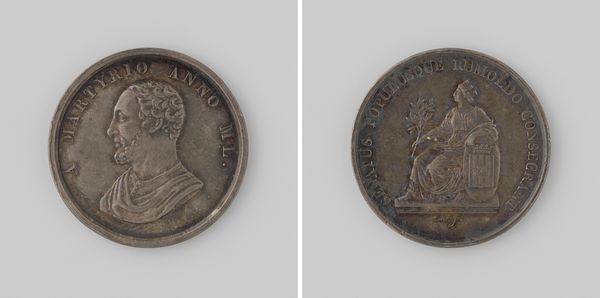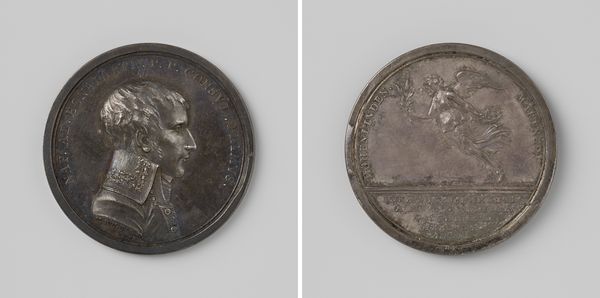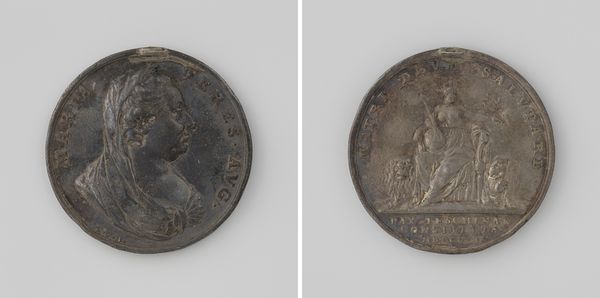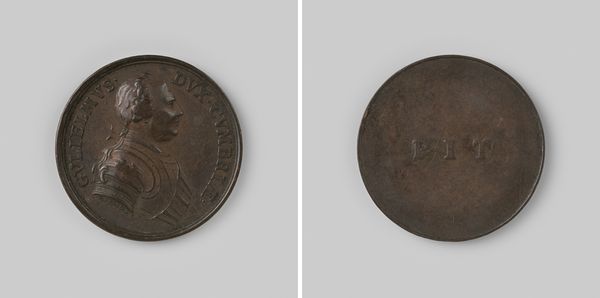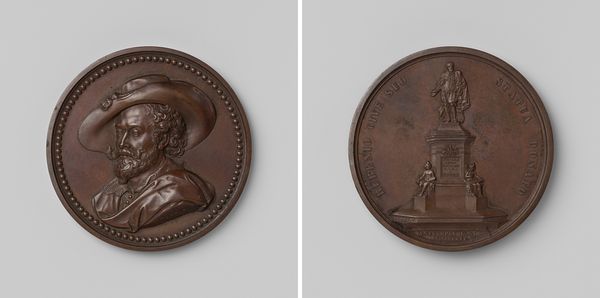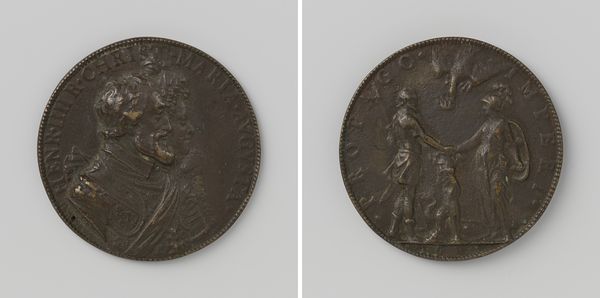
Brunswijkse soldaten, die bij Quatre-Bras en Waterloo hebben gestreden 1815 - 1820
0:00
0:00
metal, bronze, sculpture
#
portrait
#
neoclacissism
#
medieval
#
metal
#
sculpture
#
bronze
#
sculpture
#
history-painting
Dimensions: diameter 3.5 cm, weight 31.40 gr
Copyright: Rijks Museum: Open Domain
Editor: This medal, "Brunswijkse soldaten, die bij Quatre-Bras en Waterloo hebben gestreden," commemorating soldiers who fought at Quatre-Bras and Waterloo, dates from between 1815 and 1820. The Rijksmuseum attributes it to an anonymous artist, working with bronze or some similar metal. What I notice immediately is the layering of classical imagery over, seemingly, a piece of commemorative militaria. What's your read on this? Curator: You’ve keenly observed that tension, Editor. Look at how the imagery consciously evokes the visual language of ancient Roman portraiture and coinage – the laurel wreath, the idealized profile. Why do you think that visual reference is significant here? Editor: Well, it could be drawing a parallel between those soldiers and classical heroes… creating a legacy, linking them to a glorious past. Curator: Precisely. The very act of casting their image in metal lends an air of permanence, connecting these men and these battles with broader narratives of heroism and sacrifice. Think about what symbols of power mean on different scales and to various groups over time. And the choice of bronze, or a similar alloy...how does that materiality inform its reading? Editor: It makes me think of monuments. So this small token carries a monument’s worth of… historical weight? Curator: Exactly! It is a memory object that's supposed to live longer than the human carrier, creating a symbolic connection to their service, long after. It suggests a desire to cement a particular memory and understanding of those battles. How interesting that even something seemingly small can reveal layers upon layers of meaning! Editor: I hadn't thought of it that way before - as an intentional, multi-layered message embedded within something as everyday as a medal. Curator: Seeing how visual languages evolve is key. The intersection of classical and military symbols gives us an important way to better appreciate history's cultural values.
Comments
No comments
Be the first to comment and join the conversation on the ultimate creative platform.
